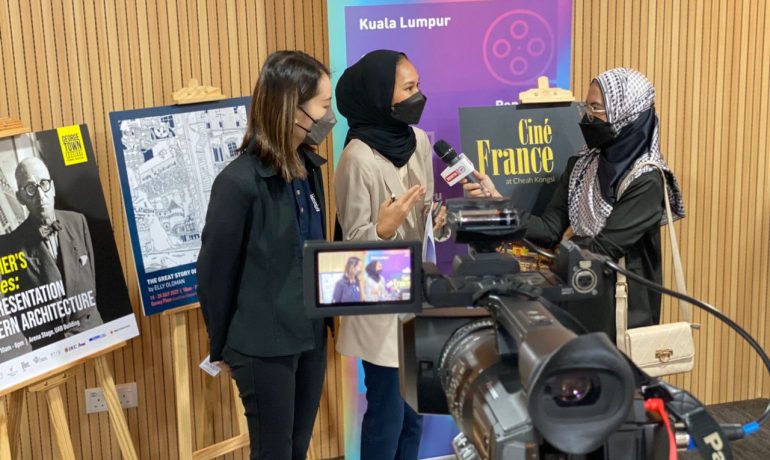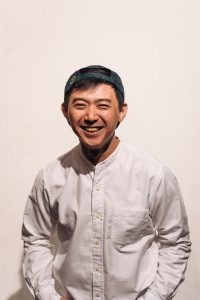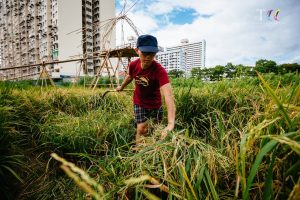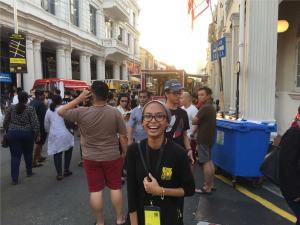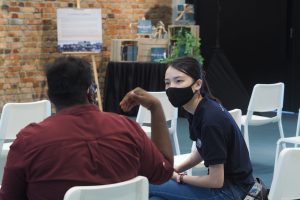What goes into organising an arts festival? Who does what behind the scenes? We reflected on these questions, diving into what it means to be a project manager, what it’s like to programme a festival/event, and how to communicate with audiences.
By Miriam Devaprasana
I remember driving along the streets of George Town’s inner city in 2013, staring out the window in awe at how the city was filled with colours, lights, and movement. It was an extraordinary experience in an otherwise quiet and sleepy city past 5 pm. George Town Festival was, and still brings out a kind of child-like admiration in me, a standstill moment in the centre of this unique celebration of all things art.
Festivals in Malaysia are typically represented by dignitaries. Allow me to clarify. If a festival or event is supported by any governmental organisation or party, it is often their words and faces in articles in the press. Rarely do we see interviews and discussions on what it’s like to manage an (arts) festival in a Malaysian setting. Rarer still is to understand approaches to coordinating an (arts) festival or events of the kind.
There are plenty of aspects that determine the success of hosting a festival, i.e., marketing and publicity, PR, production, lighting, sound, stage managers, etc. In this article, we look at three crucial roles and responsibilities: 1) the project manager, 2) programmers, and 3) marketing and communications.
Tan Hock Kheng, Project Manager and Producer
Tan Hock Kheng is a founding member of ZXC Theatre Troupe and has been actively involved in many theatre performances, often taking on the roles of actor, director, stage manager, and producer. He was part of the working committee for the Penang YTL Arts Festival (2001–2004) and has been involved in various local and international arts productions on several platforms, including George Town Festival.
Hock Kheng primarily works on his own projects or local productions, carrying the role of project manager or producer. In either role, Hock Kheng’s responsibility is to ensure that the production materialises by supporting the artists in realising the creative work.
The first thing he does is ask the artists what is needed from him. This is important as it helps shape the role, involvement, and expectations within the production. For Hock Kheng, this can range from planning and rehearsals to budgeting and sourcing vendors for lighting and sound, for example.
Hock Kheng also acknowledges that there is no uniformity in the roles of a producer and project manager; involvement is mainly dependent on the size of the production, who and how many people are involved in it, and whether there are stage and/or production managers. He has also overseen marketing and publicity strategies, so he is also able to contribute to how a production can be communicated to audiences.
Another critical aspect of any form of management and organising is how people manage. As Hock Kheng shares, “Communication is key. Everything can and needs to be communicated. This also avoids conflict, but it is important to know that any [problem] can be solved when it arises. People just need to communicate with each other.”
Nisa Mukhtar and Connie Chan, Programme Executives for George Town Festival
Since 2019, George Town Festival has been organised by TLM Event, which has a dedicated team working on the festival with each iteration. Working closely with its Festival Director, Jack Wong, and the artistic panel are the programme executives who oversee the A to Zs of programming.
Nisa Mukhtar, who’s been involved since 2019, shares how the team helps to determine the direction of the Festival:
“Our approach to setting the direction of the festival is very much based on the proposals we accept. Rather than setting one particular theme and calling for proposals that fit the theme, we want to open the platform to anyone interested. We then study each proposal thoroughly with the artistic panel before selecting the programmes for the year. Framing the direction is the final process.”
On post-selection processes, Nisa says, “The hard work comes after we select the programmes. One of the main challenges is finding an appropriate venue for the show while enhancing the viewer experience, which is not easy considering Penang has minimal arts facilities. One of the ways we’ve overcome this challenge is by using non-traditional arts spaces, like outdoor environments or heritage spaces. However, these come with challenges of their own. This is when the production team comes in.”
Connie Chan, who has been a programme executive since 2020, shares that the role requires “a thorough understanding of the production and its stages in progress which ensures that all parties are well-informed.” This includes understanding the content, technical requirements, and all aspects of the production.
“It is important to regularly communicate with the artists to stay updated on the latest progress and any challenges they may be facing,” she adds. “This ensures you have a clear and comprehensive vision of the final result of the programme. It also ensures that you are able to identify potential risks.”
Personal Reflections on Marketing and Communications
I started this article with a memory of my 19-year-old self and her admiration for George Town Festival. For the past three months, I have had the incredible opportunity to be attached to the Festival as its Marketing and Communications Executive, so I thought I’d include some reflections on what it’s like to be in the position.
Much of my role entails writing media releases, speeches, and descriptions for productions and performances to communicate with festivalgoers and potential audiences. My main responsibility is to provide texts that are balanced with the necessary information and are convincing at the same time. Some shows are relatively easy to find this balance; others require a bit more thought.
These are some of my takeaways:
- Knowing how the general public receives a particular art form is helpful. If a theme or subject is very specific, or has a context that not many may understand, this helps generate or refine ideas on how to present the production to target audiences and expand to potential audiences.
- The language used needs to be accessible. I tend to use too many words to describe something that can be said in one sentence (shoutout to having Festival Directors who also know how to edit). While lengthy sentences are one thing, there is also the question of tone, words, and vocabulary. Use something bombastic, and you pleasure wordsmiths, but create a divide with potential audiences who may be interested in the programme but do not understand what it’s actually about.
- Another practical thing to consider is the languages used to present information. Most countries only use English as it is the global language for inter-community communication. In Malaysian settings, especially when discussing forms of inclusivity, diversity, and accessibility, it might be a good idea to be sensitive to the use of our National Language and other Official languages. However, this would require early planning and having good translators on board!
While the above briefly explains what producers, project managers, festival programmers and marketing and communications personnel cover in terms of roles and responsibilities, it is evident that there is much going on behind-the-scenes from the time proposals are sent in, to the finished ‘product’ on stage. A common thread between all three is how a programme or event is communicated among and between all those involved—a shared-vision that is then translated to audiences to experience.
Miriam Devaprasana is an observer and dabbler of creative expressions. She is the founding member of Dabble Dabble Jer Collective, a Penang-based arts collective, and is currently pursuing a PhD in Urban Sociolinguistics. Miriam hopes that one day, her work will help form a new way of thinking ‘Malaysia’. Read her blog at mdev16.wordpress.com

